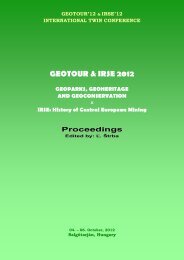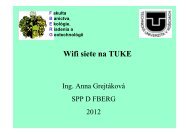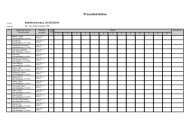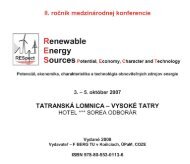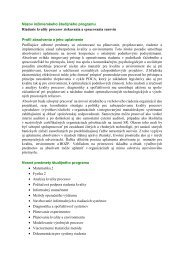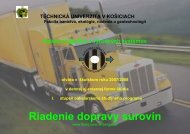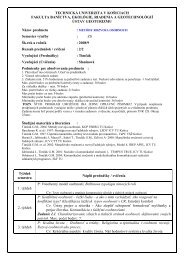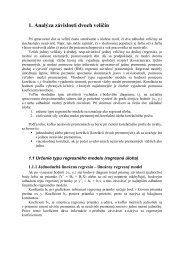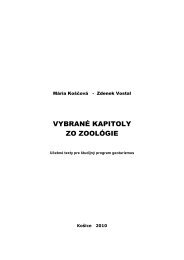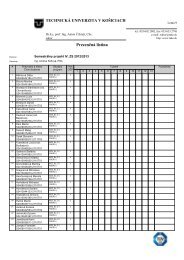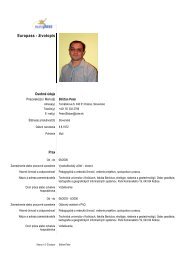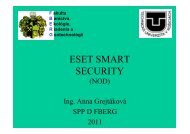GEOTOUR & IRSE 2012.pdf - Fakulta BERG - TUKE
GEOTOUR & IRSE 2012.pdf - Fakulta BERG - TUKE
GEOTOUR & IRSE 2012.pdf - Fakulta BERG - TUKE
Create successful ePaper yourself
Turn your PDF publications into a flip-book with our unique Google optimized e-Paper software.
Salgótarján, 04. – 06. October 2012<br />
kWh/m 2<br />
The second figure shows the optimal inclination of photovoltaic modules. The annual total<br />
radiation in the district of Sobrance is about 1200 kWh/m2.<br />
Fig. 11 Global irradiation and solar electricity potential in Slovakia and Sobrance district<br />
Source: http://re.jrc.ec.europa.eu/pvgis/<br />
SUCCESSFUL EXAMPLE OF DEVELOPMENT IN GUSSING, AUSTRIA<br />
Similar situation as in the Sobrance district was in the Austrian region Burgenland. Local<br />
institutions fought with high unemployment. As the starting point they decided to utilize all<br />
the resources, that the region had and so achieve economic growth by contribution of<br />
investment incentives and cooperation of individual subjects.<br />
Burgenland is the youngest region in Austria. Gussing has approximately 4000 inhabitants. In<br />
the 50's the region bordered with Hungary. There was a lack of jobs and many people left the<br />
region because of work, mostly to the USA (about 9000 people). Therefore, the idea of<br />
industrial development and creating job opportunities created, to decrease people leaving their<br />
homes and families, and that human capital could remain in the region. The conditions were<br />
particularly to use all natural resources and material in this region. In 1988 the construction of<br />
the station began. The authors of the project relied on what they had: biomass, solar energy,<br />
forests, agricultural machinery. But the important thing was to find experts in various<br />
directions: technology, chemical processes, environmental impacts etc. At the beginning of<br />
construction of the station's founders had to hang with the lack of funds and had to count<br />
primarily with their own money and loans, as Austria at that time wasn´t part of the European<br />
Union.<br />
The basic philosophy of the installation was the final customer shouldn´t buy oil, gas, and<br />
various raw materials from external suppliers, but to exploit domestic sources - solar,<br />
biomass, and therefore that any money could remain in the region. It was necessary to<br />
determine what the potential of the region is - forests, meadows and natural resources. Then it<br />
was necessary to determine the energy consumption in the city Gussing. It was found that 70<br />
000 ha in the region can be used for the purpose of obtaining energy, consumption would be<br />
able to cover 136%. The investment for the construction operation in Gussing was 47 million<br />
EUR.<br />
The actual device in Güssing includes four operations:<br />
1) the operation of research and development - cooperation with the Technical University in<br />
Vienna,<br />
2) operation of the demonstration - demonstration of how the operation works and what<br />
benefits it provides,<br />
3) the possibility of providing know-how - to help others who are interested and has got a<br />
plan,<br />
62



